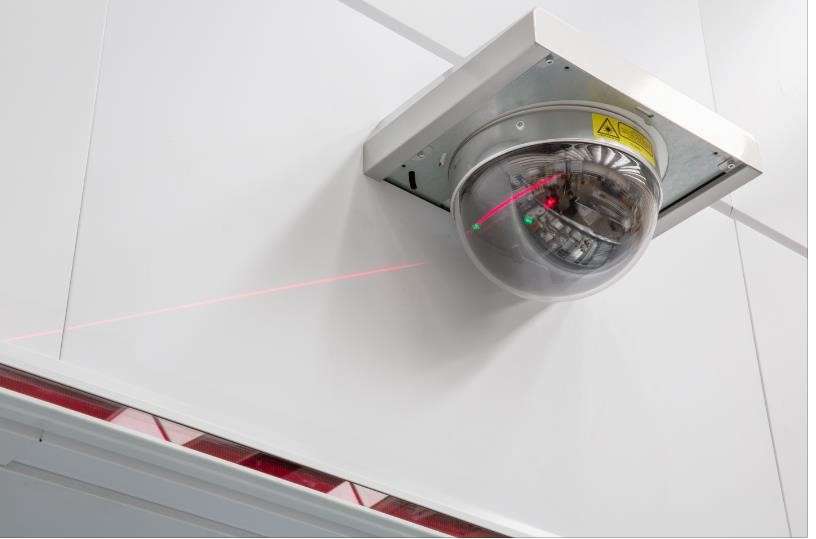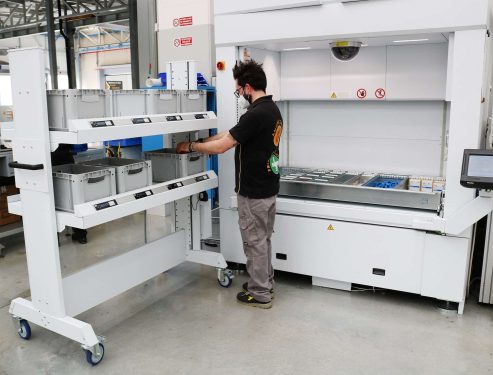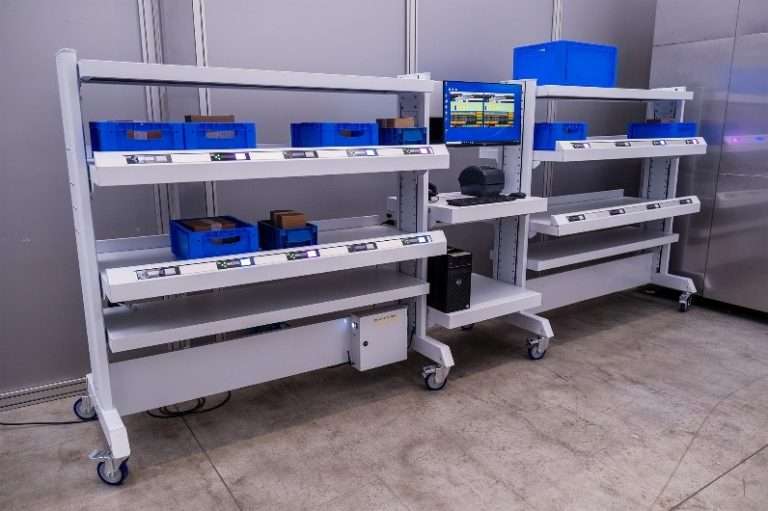Light Directed Picking System
Pick-to-light systems employ visual cues to increase both speed and efficiency in the picking process. Categorized as a “paperless” picking solution, pick-to-light systems can be used with static storage such as pallet racks and shelving, as well as with a vertical lift module (VLM) or other automated storage and retrieval systems (AS/RS).


Not only can pick-to-light warehouse applications indicate what items to pick, they also can indicate how many and other pertinent details. As such, light-directed automated picking systems can increase pick rate productivity and order accuracy by reducing the time spent seeking items and perusing paperwork.
Light-directed picking uses both hardware and software components. In addition to the basic light device – usually either an LED or laser – pick-to-light hardware typically includes a confirmation button for the picker to press when they’ve picked the item and are ready to move on to the next. Alphanumeric displays communicate order numbers, handling directions and other instructions, and will indicate when the pick is complete.
Software varies by pick-to-light provider, of course, but most high-volume users opt for an application that integrates with the operation’s existing warehouse management software (WMS).
Why Pick-to-Light?
According to MHI, light-directed picking systems offer versatility to many effective applications beyond order picking and parts picking, such as sortation, kitting, consolidation and assembly. Applying the 80/20 Rule, pick-to-light automated picking systems work best when applied to operations in which a relatively small number of SKUs (approximately 20%) account for a high percentage of daily order volume (approximately 80%). But light-directed picking can be even more efficient when used in conjunction with a VLM or other AS/RS.
Advantages
Light-directed picking systems enhance the speed, order accuracy and cost-efficiency of the order-picking process. MHI reports that full project ROI is often achieved quickly because of the following benefits:
- 30-50% increases in pick rate productivity
- 9+% accuracy rates
- Shorter order cycle times
- Increased throughput
- Reduced employee training time
- Improved customer service
- Lower operational costs through reduced labor, errors, rework or chargebacks
- A more predictable picking process
- Reduced costs through the elimination of paper picking lists
- A more intelligent pick process that provides greater visibility into daily performance


